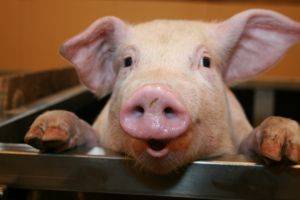Pork consumption and market in North America is volatile and worrisome
Farm Credit CANADA (FCC), an agricultural economic analysis and lending company, has released an update to its pork and beef market research , noting that "overall, the sector is facing volatility going forward." Overall, demand for pork in Canada has been growing through 2019, but the FCC notes that "Throughout the pandemic (2020-2022), disposable income and pent-up demand have benefited the bovine supply chain , while reducing demand for pork." However, pork prices have declined relative to beef and chicken, which should shift consumption towards pork, other things being equal.”
The outlook for hog prices in Canada is not as bright as at the start of the year due to the closure of an Olymel processing plant in Quebec. “Western farrowing to fattening profitability will continue to be positive, while the eastern margins will decline year-on-year for the second year due to lower prices and feed costs, which are relatively higher than in the west,” states FCC.
US prospects
RaboResearch recently released its Global Pork Q2 2023 Quarterly Report: Consumption in Focus. Experts note that “weaker economic growth is starting to weigh on pork consumption” in the US and elsewhere. “Despite early indications that the strongest inflationary impact may have passed, a lagging impact on consumption is likely to be felt throughout 2023,” the authors state.
They add that “we are seeing persistently high retail prices limiting the consumption of all proteins. Consumers continue to save by switching to cheaper protein options and smaller pack sizes.” In response to these and possibly other factors, Smithfield, the largest pork producer in the US, closed dozens of farms.
However, RaboResearch insists that "with the economy slowing down , pork remains in a strong position as demand for this protein has historically been less income-sensitive than more expensive proteins like beef."
Other noteworthy developments in the report include a look at pork exports from the US and Canada, which “remain competitive in key markets, but hog production growth will slow as consumption declines. Losses will rise."
Indeed, the American consulting and research firm Sterling Marketing, in its regular pork and beef profit tracking reports, claims that producers suffered a loss of $13 (€15.78) per HEAD in the week of May 7-13, 2023. which is about double the loss from the previous week - and very terrible compared to the profit of $73 (67.75 euros) per head in the same period last year.



























































